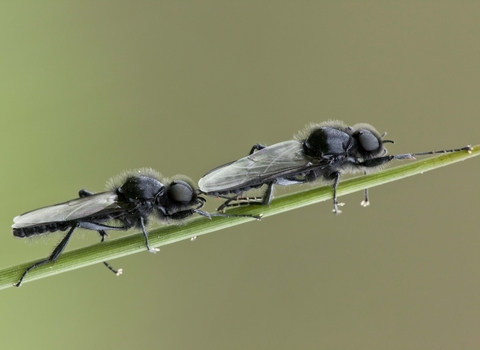
St Mark's Fly ©Guy Edwardes/2020VISION
St Mark's fly
The St Mark's fly is small, black and shiny. It is so-called because it emerges around St Mark's Day, April 25th. Large numbers of adults can be found in woodland edges, hedgerows, fields and wetlands.
Scientific name
Bibio marciWhen to see
April to JuneSpecies information
Category
Statistics
Length: 1.2-1.4cmCommon.
About
The St Mark's fly, or 'hawthorn fly, is a very common, long, shiny, black fly that can be found in large numbers during the spring around woodland edges, fields and wetlands. It hangs in the air over the vegetation, drifting along with its legs dangling underneath it. St Mark's flies will often land on any objects in their way, including fence posts and people, and are rather sluggish at rest. The larvae live in the soil feeding on roots, grasses and rotting vegetation, and are often found around compost heaps. The adults feed on nectar and are considered to be important pollinators for fruit trees and other plants.How to identify
St Mark's flies are black and shiny; males and females look very different, however: the male has very large eyes, while the female has a small head with tiny eyes. There are several species of closely flies in the family Bibionidae that can be very difficult to tell apart. For instance, in late summer, the heather fly hatches in large numbers on moorlands; it looks very similar to the St Mark's fly, but it has orangey-red thighs.Distribution
Widespread.Did you know?
The common name of this species comes from the fact that the adults usually emerge in large numbers around St Mark's Day, April 25th.The Wildlife Trusts recognise the importance of healthy habitats to support all kinds of species throughout the food chain so look after many nature reserves for the benefit of wildlife.
